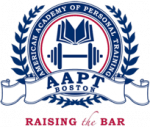Part one: 1-5 of 15 “Salt and Pepper” Techniques for Strength and Muscle Growth
Everyone who’s worked with weights is familiar with a straight set and rep scheme. You pick an exercise, choose a weight, and do the prescribed number of reps. This type of training can get you very far. It took me from a weightlifting newbie to winning my first few fitness competitions. But after a while, I found that I hit a plateau in terms of muscle growth. I also became a bit bored with this style. I began to include some different training techniques to breathe new life into my routine. It added much needed fun to my training. Also, my body responded with all kinds of great soreness and muscle development! Here are 15 of my favorite techniques to spice up your repertoire.
1) Drop sets
With a good old fashioned drop set, you perform an exercise to muscular failure, quickly reduce the weight and continue to failure with the lighter weight. You can continue to extend the set by dropping the weight a second and even third time for a few more reps.
Example: After a set of dumbbell lateral raises move down the rack to grab a lighter pair and continue lateral raises (repeat with even lighter weight if desired)
2) Mechanical Drop Set
Here we are changing the mechanics of a movement to go from a less to more advantageous position. Perform a set of an exercise to failure then, keeping the same weight, change the EXECUTION of the exercise for more mechanical advantage and continue to failure.
Examples:
A)After a set of wide grip pronated pull ups, switch to neutral grip for a few more reps. B) Perform front squats to failure and immediately switch to back squats for a few more grueling reps.
3) Rest pause
Here we do a full set of an exercise, rack the weight for a few seconds (5-15) and force a few extra reps. You can repeat as much as you like to get more reps with good form in a set.
Example: Hit your target number of reps on a bench press, rack it (keeping your hands on the bar), take a few breaths and hit more reps. (Note: Use a spotter on an exercise like the bench press)
4) Band Assist
Use a set of bands, specially made for this technique, to assist you in a lift. This method is typically used on the bigger lifts (squat, bench etc). The bands give more assistance during the most challenging part of the movement and less assistance in the easier phase. This allows you to get used to weights beyond your training max.
Example: For squats, attach the bands to the top of the rack and to the bar. They will make the weight feel lighter at the bottom and heavier at the top where you have the most advantage. Perform your set for the prescribed reps.
5) Band Resisted
This is the opposite of a band assist. Here we are using sub maximal weights with added band resistance. This allows for more resistance at the ‘easiest’ part of the lift.
Example: When performing deadlifts, anchor one end of the band to the floor and attach the other to the bar. This will provide more resistance as you move the weight away from the floor making the lockout portion more challenging.
Pepper in a few of these techniques during your workout to bust through a plateau and add a little excitement! Happy training.




